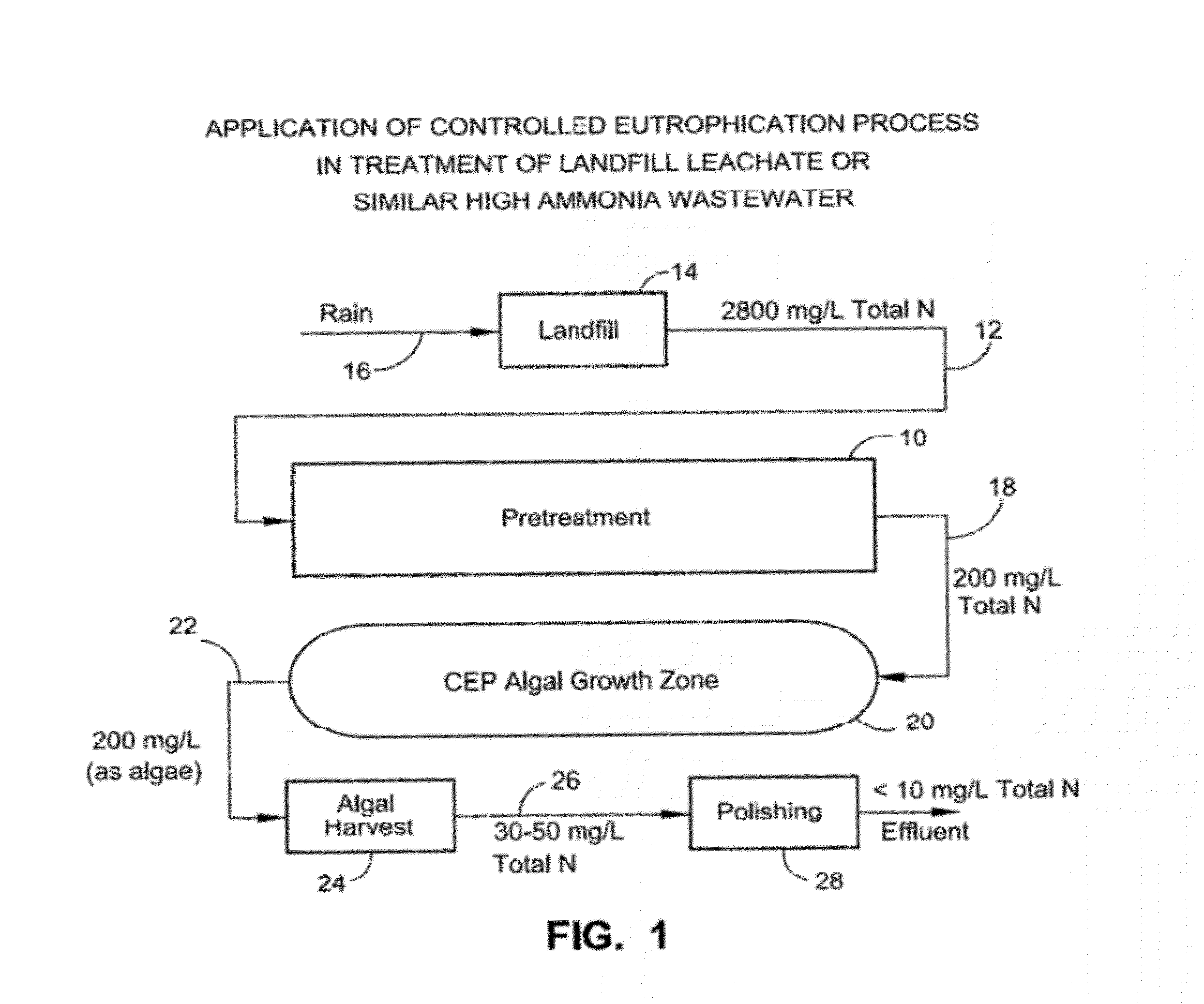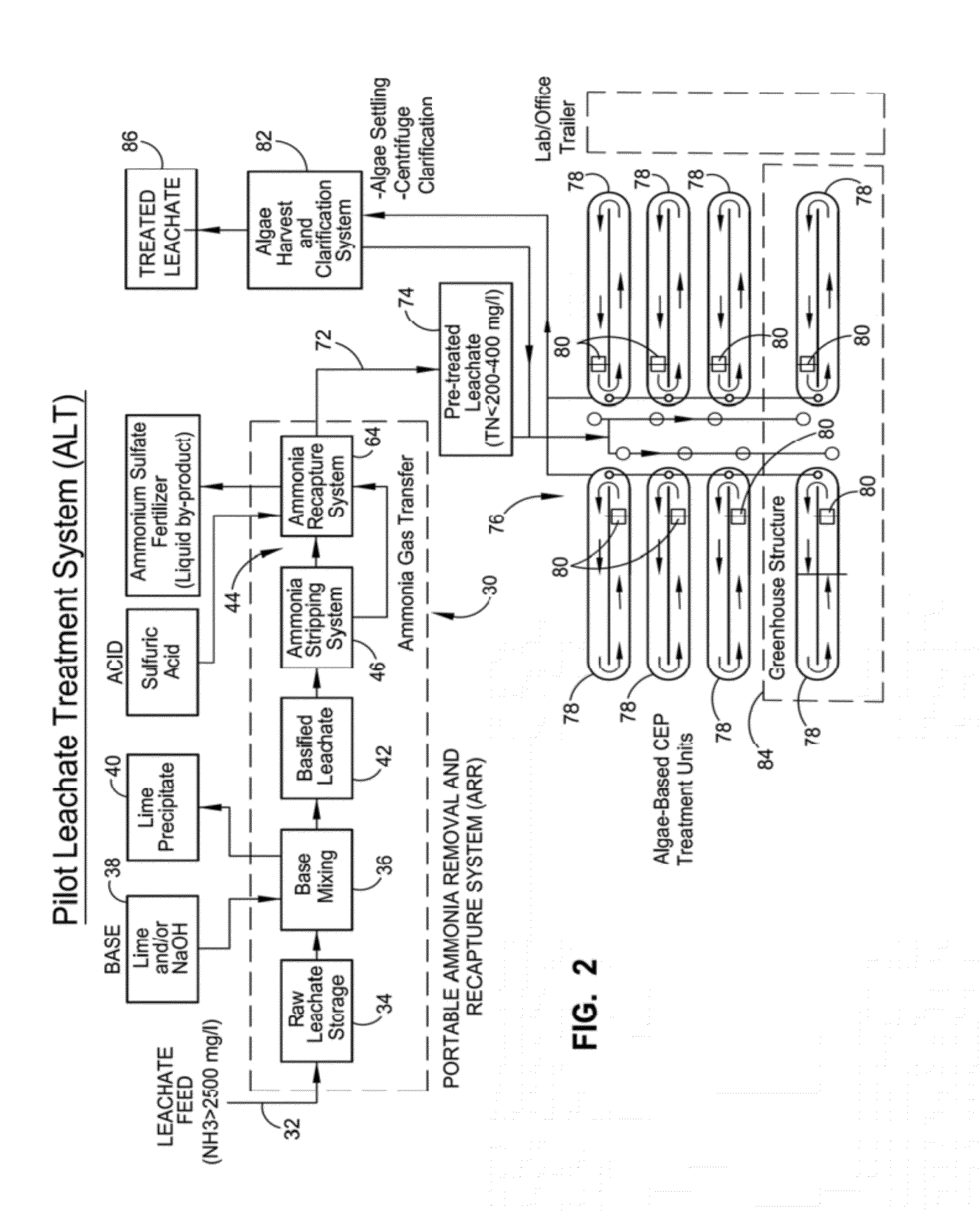Treating nitorogen-contaminated wastewaters
a wastewater and nitrogen technology, applied in water/sewage multi-stage treatment, filtration separation, separation processes, etc., can solve the problems of difficult treatment of leachates and similar wastewaters, ammonia can be toxic to bacterial colonies in traditional bacterial-based treatment systems, and ammonia is difficult to free up in the atmosphere. , to achieve the effect of reducing the total nutrient content of wastewater
- Summary
- Abstract
- Description
- Claims
- Application Information
AI Technical Summary
Benefits of technology
Problems solved by technology
Method used
Image
Examples
example
[0140]A method of treatment was tested, which included optional chemical precipitation, ARR, AS, CEP and optional MF / RO for the treatment of municipal landfill leachate.
[0141]An ARR ammonia degassing and recapture system, including prior chemical precipitation, was implemented using various chemical base-additions to increase pH to about 8.5 to >12 including calcium hydroxide (lime) and / or sodium hydroxide. The system was initially tested to refine operational procedures, fix liquid leaks, verify ammonia recapture effectiveness and check lab analysis procedures. The system was then operated and performed satisfactorily, as well as or better than a previous small-scale research system. Ammonia concentrations in raw leachate (750-1450 mg NH3 / L) was reduced to less than 15 mg NH3 / L, corresponding to a 99% reduction, in 6 hours of operation with an input rate of 100 L of leachate per hour (26.4 gallons per hr.), degassing pH of 10.5, and ambient temperature (compare FIG. 8). Ammonia in ...
PUM
| Property | Measurement | Unit |
|---|---|---|
| pH | aaaaa | aaaaa |
| pH | aaaaa | aaaaa |
| pH | aaaaa | aaaaa |
Abstract
Description
Claims
Application Information
 Login to View More
Login to View More - R&D
- Intellectual Property
- Life Sciences
- Materials
- Tech Scout
- Unparalleled Data Quality
- Higher Quality Content
- 60% Fewer Hallucinations
Browse by: Latest US Patents, China's latest patents, Technical Efficacy Thesaurus, Application Domain, Technology Topic, Popular Technical Reports.
© 2025 PatSnap. All rights reserved.Legal|Privacy policy|Modern Slavery Act Transparency Statement|Sitemap|About US| Contact US: help@patsnap.com



